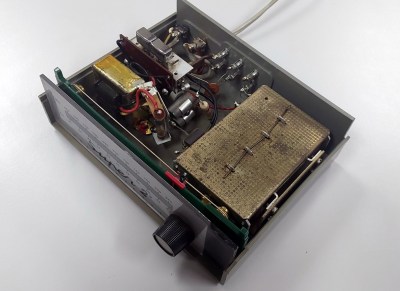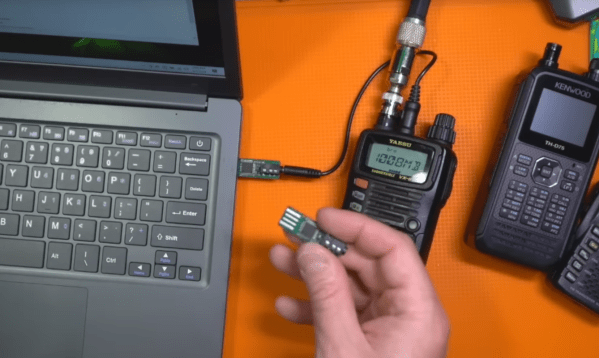The magnetic loop antenna is a familiar sight in radio amateur circles as a means to pack a high performance HF antenna into a small space. It takes the form of a large single-turn coil made into a tuned circuit with a variable capacitor, and it provides the benefits of good directionality and narrow bandwidth at the cost of some scary RF voltages and the need for constant retuning. As [VK3YE] shows us though, magnetic loops are not limited to HF — he’s made a compact VHF magnetic loop using a tin can.
It’s a pretty simple design; a section from the can it cut out and made into a C shape, with a small variable capacitor at the gap. The feed comes in at the bottom, with the feed point about 20 % of the way round the loop for matching. The bandwidth is about 100 MHz starting from the bottom of the FM broadcast band, and he shows us it receiving broadcast, Airband, and 2 meter signals. It can be used for transmitting too and we see it on 2 meter WSPR, but we would have to wonder whether the voltages induced by higher power levels might be a little much for that small capacitor.
He’s at pains to point out that there are many better VHF antennas as this one has no gain to speak of, but we can see a place for it. It’s tiny, if you’re prepared to fiddle with the tuning its high Q gets rid of interference, and its strong side null means it can also reduce unwanted signals on the same frequency. We rather like it, and we hope you will too after watching the video below.





 In a Dutch second-had store while on my hacker camp travels this summer, I noticed a small grey box. It was mine for the princely sum of five euros, because while I’d never seen one before I was able to guess exactly what it was. The “Super 2” weighing down my backpack was a UHF converter, a set-top box from before set-top boxes, and dating from the moment around five or six decades ago when that country expanded its TV broadcast network to include the UHF bands. If your TV was VHF it couldn’t receive the new channels, and this box was the answer to connecting your UHF antenna to that old TV.
In a Dutch second-had store while on my hacker camp travels this summer, I noticed a small grey box. It was mine for the princely sum of five euros, because while I’d never seen one before I was able to guess exactly what it was. The “Super 2” weighing down my backpack was a UHF converter, a set-top box from before set-top boxes, and dating from the moment around five or six decades ago when that country expanded its TV broadcast network to include the UHF bands. If your TV was VHF it couldn’t receive the new channels, and this box was the answer to connecting your UHF antenna to that old TV.











